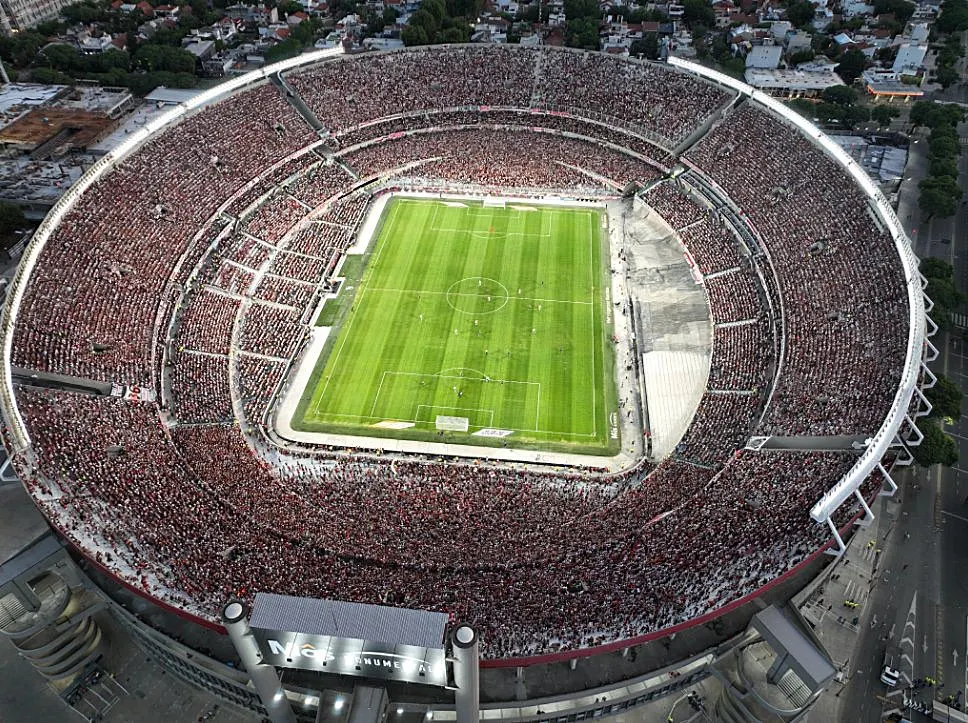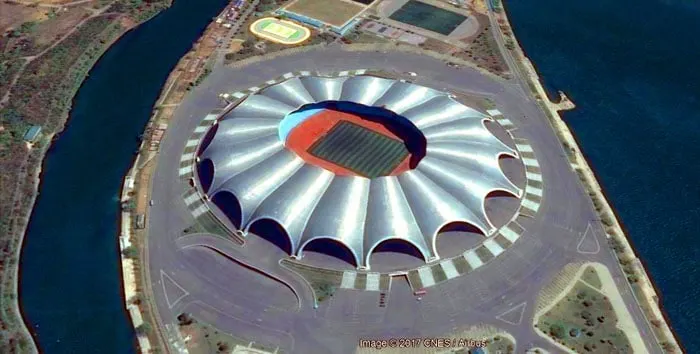South America is known for producing some of the best football teams and footballers in the sport’s history.
Argentina and Brazil have eight World Cup titles between them, with Uruguay also having won it a couple of times over the last century.
While the South American nations might not have the financial strength or infrastructure of Europe, their love for the beautiful game is uncontested.
Over the years, the South American nations have started to modernize their infrastructure and improve the condition of some of their biggest stadiums.
That has been the case with Argentina’s Estadio Monumental de Nunez.
The monumental stadium was inaugurated in 1938 and was actually known as just the ‘Estadio Monumental’.
The stadium was then renamed ‘Estadio Antonio Vespucio Liberti,’ in 1986 – a tribute to their former chairman Antonio Vespucio Liberti – who played a huge role in the construction of the stadium.
The stadium was renamed the Estadio Monumental de Nunez or Estadio Mas Monumental after Argentine supermarket brand Mas bought the stadium’s naming rights for around $2.85m-a-year.
This is, of course, the home ground of the famous Argentine club River Plate, which has been playing in the stadium since its inception.
But with the South American nations now strongly pushing to host the 2030 World Cup, there are upgrades that need to be met to impress FIFA.
As a result, the Estadio Monumental de Nunez has now been revamped with more seats added to increase its capacity.
With the addition of over 10,000 more seats in the stadium and the removal of tracks, the Estadio Monumental de Nunez now has a maximum capacity of 83,196.
Moreover, there have also been 30 new cabins built in for VIPs, as well as the addition of new retractable seats as well as ‘Anti vandalism’ seats to help avoid Hooligan behaviour.
As a result of its newest 83,196 capacity, River Plate’s stadium has become the largest one in South America.
A record 83,189 people attended River Plate’s first-ever game (against Argentinos Junior) at the Estadio Monumental after the renovation and this breathtaking photo from the top has gone viral –

It now holds more people than Peru’s Monumental de la U (80,093) as well as the Maracana Stadium in Brazil (78,828) – which was the host of the 2014 FIFA World Cup.
The Argentina national team are set to play their first two games since their World Cup win – hosting two international friendly games at the Estadio Monumental de Nunez during the International Friendly window in March.
Despite some fans debating if this upgrade for the Argentine stadium has made it the biggest football ground in the world, that isn’t the case at all.
As per the record books, North Korea actually holds that prestige.
North Korea’s Rungrade 1st of May Stadium – which hosts the matches for their national men’s and women’s teams – is the biggest football stadium in the world with a capacity of 114,000!

To make things clear, the Estadio Monumental de Nunez actually had a record-setting capacity of 100,000 in 1975 when River Plate played Racing Club for the Primera Division title. But its official capacity is well less than that and it doesn’t match up to the North Korean stadium.
Moreover, Barcelona’s Camp Nou is also known to be among the biggest stadiums in the world – having a maximum capacity of 99,354!
The venue for the 2010 World Cup final, the FNB Stadium, has the third-highest football stadium capacity at 94,736.
So it’s quite clear that the Estadio Monumental de Nunez is not the biggest stadium in the world. In fact, it stands in the 13th spot – overtaking the likes of Signal Iduna Park and Santiago Bernabeu Stadium – according to Wikipedia.
But after becoming South America’s biggest football ground, they’ve greatly improved their chances of hosting the 2030 FIFA World Cup final if the South American nations get the rights to host it in its centenary year.







